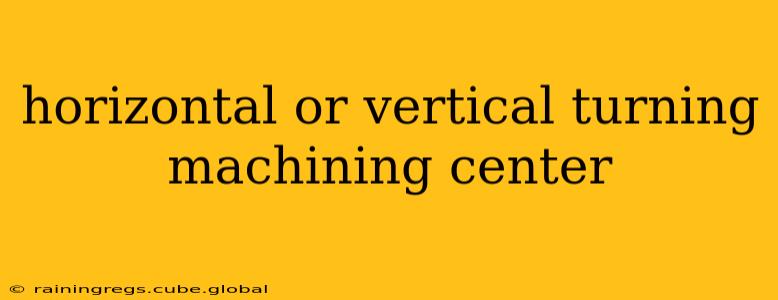Choosing between a horizontal or vertical machining center (HMC or VMC) is a crucial decision for any manufacturing operation. The best choice depends entirely on the specific applications, workpiece characteristics, and production volume. This comprehensive guide will delve into the key differences between HMCs and VMCs, helping you make an informed decision.
What is a Horizontal Machining Center (HMC)?
A horizontal machining center features a horizontally oriented spindle, meaning the cutting tool rotates parallel to the workpiece table. This configuration is ideal for machining long, slender parts or those requiring high-precision operations on multiple sides without frequent re-orientations. HMCs often boast larger work envelopes and heavier duty construction compared to VMCs, making them well-suited for high-volume production runs of complex parts.
What is a Vertical Machining Center (VMC)?
A vertical machining center features a vertically oriented spindle, with the cutting tool rotating perpendicular to the workpiece table. This design simplifies setup and operation, particularly for parts with complex features on a single side. VMCs are generally more compact and cost-effective than HMCs, making them a popular choice for smaller shops or those with less demanding production needs.
HMC vs. VMC: Key Differences
Here's a breakdown of the key distinctions between horizontal and vertical machining centers:
| Feature | Horizontal Machining Center (HMC) | Vertical Machining Center (VMC) |
|---|---|---|
| Spindle Orientation | Horizontal | Vertical |
| Workpiece Handling | Typically utilizes pallets for automated loading/unloading | Often manually loaded and unloaded, though automation is possible |
| Part Clamping | More complex due to part orientation | Generally simpler due to gravity assisting clamping |
| Chip Management | More efficient chip removal due to gravity | Chip removal can be more challenging depending on part geometry |
| Accuracy & Precision | Excellent for high-precision applications, especially long parts | Excellent for a wide range of applications, particularly with multiple axes |
| Typical Applications | Automotive components, aerospace parts, large molds | General machining, prototyping, smaller batches of parts |
| Cost | Generally higher initial investment | Generally lower initial investment |
| Complexity | More complex to program and operate | Relatively simpler to program and operate |
Which Machine is Right for Me? Factors to Consider
Several factors influence the optimal choice between an HMC and a VMC:
- Part Geometry: Long, slender parts are often better suited to HMCs, while parts with complex features on one side are well-suited for VMCs.
- Production Volume: HMCs excel in high-volume production, while VMCs are adaptable for smaller batches and prototyping.
- Machining Operations: The complexity of the machining operations will influence the machine choice. HMCs are favored for complex multi-sided machining.
- Budget: VMCs usually represent a lower initial investment.
- Shop Floor Space: HMCs typically require more floor space.
- Automation Needs: HMCs often integrate more readily with automated systems.
What are the advantages of using a horizontal machining center?
HMCs offer several advantages:
- Improved Chip Management: Gravity assists in chip evacuation, leading to less downtime for chip clearing.
- Enhanced Accuracy and Repeatability: The horizontal orientation of the spindle contributes to improved accuracy, particularly for long parts.
- Suitable for Complex Parts: HMCs can efficiently machine complex parts with multiple features on several sides.
What are the advantages of using a vertical machining center?
VMCs also boast several advantages:
- Simplified Setup and Operation: The vertical orientation makes part loading and fixturing easier.
- Cost-Effective: VMCs typically have a lower initial investment.
- Versatility: VMCs are adaptable to a wide range of applications.
- Improved Accessibility: Easier access to the tooling and workpiece for inspection and adjustments.
What are the applications of horizontal and vertical machining centers?
Both HMCs and VMCs have a wide array of applications across various industries. HMCs are commonly used in aerospace and automotive manufacturing for machining engine blocks, large castings, and complex parts requiring high precision. VMCs are frequently employed in general machining, mold making, and prototyping, offering versatility for a wider range of applications.
Ultimately, selecting the right machine hinges on carefully analyzing your specific manufacturing requirements. Consider the factors outlined above to ensure you make a decision that optimizes efficiency, productivity, and profitability. Consulting with a qualified machining expert can provide invaluable insights tailored to your unique needs.
